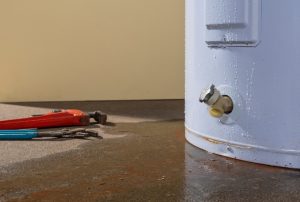When looking for the best way to cool your space, either home or office, heat pumps aren’t the first item on many people’s minds – an AC is. Well, that’s understandable, primarily due to their names.
However, just like an air conditioner, a heat pump is designed to cool or warm your house or office. In fact, their functionality is also almost identical. So, when you want to heat or cool your rooms, a heat pump is also an excellent option.
But how does a heat pump work exactly? Before that, it’s more prudent first to understand what the device is all about. For this reason, let’s first answer the following question.
What is a Heat Pump?
This is a device that works to transfer heat between places. There are two types of heat pumps:
- The Air source – this transfers heat between the air inside and outside your home.
- A ground source – that moves the heat between the outside ground and your home’s inside air.
In essence, it’s a standalone device that uses electricity and refrigeration technology to heat or cool buildings.
This device comprises two components or parts – an indoor unit and an outdoor condenser unit. The outdoor unit is responsible for collecting hot or cool air from outside, while the indoor unit distributes this air into the house. This either cools or heats the rooms.
Sometimes, people refer to these devices as “mini-splits,” because the two components, air handler, and condenser, are separated by a refrigerant line.
If you want to heat or cool your house or office without installing the ductwork, heat pumps are your ideal solution. So, how do these appliances work?
How Do Heat Pumps Work?
As noted earlier, a heat pump doesn’t generate heat. A heat pump will absorb hot air from outdoors, air or ground, and then transfer this hot air to the interior unit, unlike a furnace. The indoor air handler will then distribute the air to the rooms as required.
Essentially, when hot air is absorbed from outdoor air, it is transferred to the refrigeration line. The coolant is compressed, which in return increases its temperatures even more.
This refrigerant then moves to the indoor air handler, transferring the hot air to the handler. The air handler then blows the hot air into the house through the control of a thermostat.
When functioning as an AC to cool the rooms, a heat pump will absorb the warm air indoors, move it to the outside unit and release it to the outdoor environment. This is precisely the exact mechanism used by your air conditioning system.
The warm air from the interior gets to the refrigerant, the coolant takes the air to the outside condenser unit, and a fan on this unit disperses the warm air outdoors. This, in effect, cools your home or office interior as cold air moves inside.
How does a Heat Pump Work in Winter?
As we have seen, a heat pump warms your house by extracting warm air from the outside air and sending it into the house. But, what happens during the freezing days of winter. Well, the process is the same as discussed above.
However, it’s good to note that heat pumps will only operate optimally when temperatures are above 40 degrees Fahrenheit. Once temperatures drop below this, the heat pump gradually loses efficiency, up until 25 degrees (-3.88) Fahrenheit, where it can’t warm the house.
At lower temperatures, a heat pump uses considerable amounts of energy to heat spaces. This is because it’s too cold outside, and there is little or no heat energy for the heat pump to extract. For this reason, heat pumps are not so ideal in heating buildings when temperatures fall below 40 degrees Fahrenheit.
How does a Heat Pump Work with a Furnace?
During freezing temperatures, heat pumps become inefficient. But does this mean you freeze out? Not at all! That’s where a furnace comes in handy.
A dual system consisting of a heat pump and a furnace will ensure that even when outside temperatures fall below 25 degrees Fahrenheit, you can still warm your home and stay comfortable. How does this work?
Dual heating systems are efficient, using a heat pump to draw warm air from the outdoors to warm the house during mild cold and a furnace when temperatures go too low. Since a heat pump uses electricity to extract hot air from the outside, during too low temperatures, it becomes uneconomical since the system will use a lot of energy.
When this happens, the furnace takes overheating to prevent excessive electricity use or strain on the heat pump. In summer and the not-too-cold temperatures, the dual system employs the distribution features of the furnace without turning on the burners. This way, the furnace only runs full-blown during cold winter days.
When heating, the furnace heats the building by blowing air over hot coils. The heated air is then distributed across the rooms as desired.
During the hot summer days, the furnace operates in reverse mode to act as an AC. Using these two systems jointly allows for efficiency and economy in terms of power consumption.
Pros and Cons of a Heat Pump
Why would someone choose or not choose a heat pump to heat their building?
Pros
A homeowner will choose a heat pump because the following reasons:
- Despite not being a renewable energy source, as it still uses some electricity, a heat pump is significantly efficient. This means that it doesn’t consume a lot of energy to keep your home warm. This ensures that you don’t end up paying too much money for electricity bills.
- In areas without extreme cold winters, a heat pump can be your home’s source of heat all year round.
- In a properly insulated property, a heat pump can save you a significant amount of money in terms of fuel (gas or oil).
- Heat pumps are known to distribute warm air throughout the house evenly. This means you won’t find significant variation in temperatures, with some rooms colder or warmer than others.
- Ground-source systems are excellent humidifiers, outranking the traditional ACs.
Cons
Some drawbacks of this system include:
- In extreme cold days, the system becomes inefficient and uneconomical. This requires you to have a backup heating plan.
- Without proper insulation, heat pumps might not be enough to offer optimum warmth in a building.
Effects of a Heating Pump on Heating and Electricity Bills
Generally, when using a single unit heat pump (one-to-one pump) daily, your monthly electricity bill goes up by about $50 to $100.
On the other hand, a heat pump decreases your heating fuel bills significantly. For instance, a household using 800 gallons of oil yearly can reduce this by around 300 gallons by using a heat pump.
If oil costs around $2.89 per gallon, it will cost you around $29.49 per million BTU. On the other hand, achieving 1 million BTU using a heat pump, at the cost of 14.5 cents per kWh, will cost you $14.71.
This means that using a heat pump to heat your home equates to heating with oil at $1.44 per gallon. That is around 48% less, meaning that a heat pump is efficient and will save you money.














